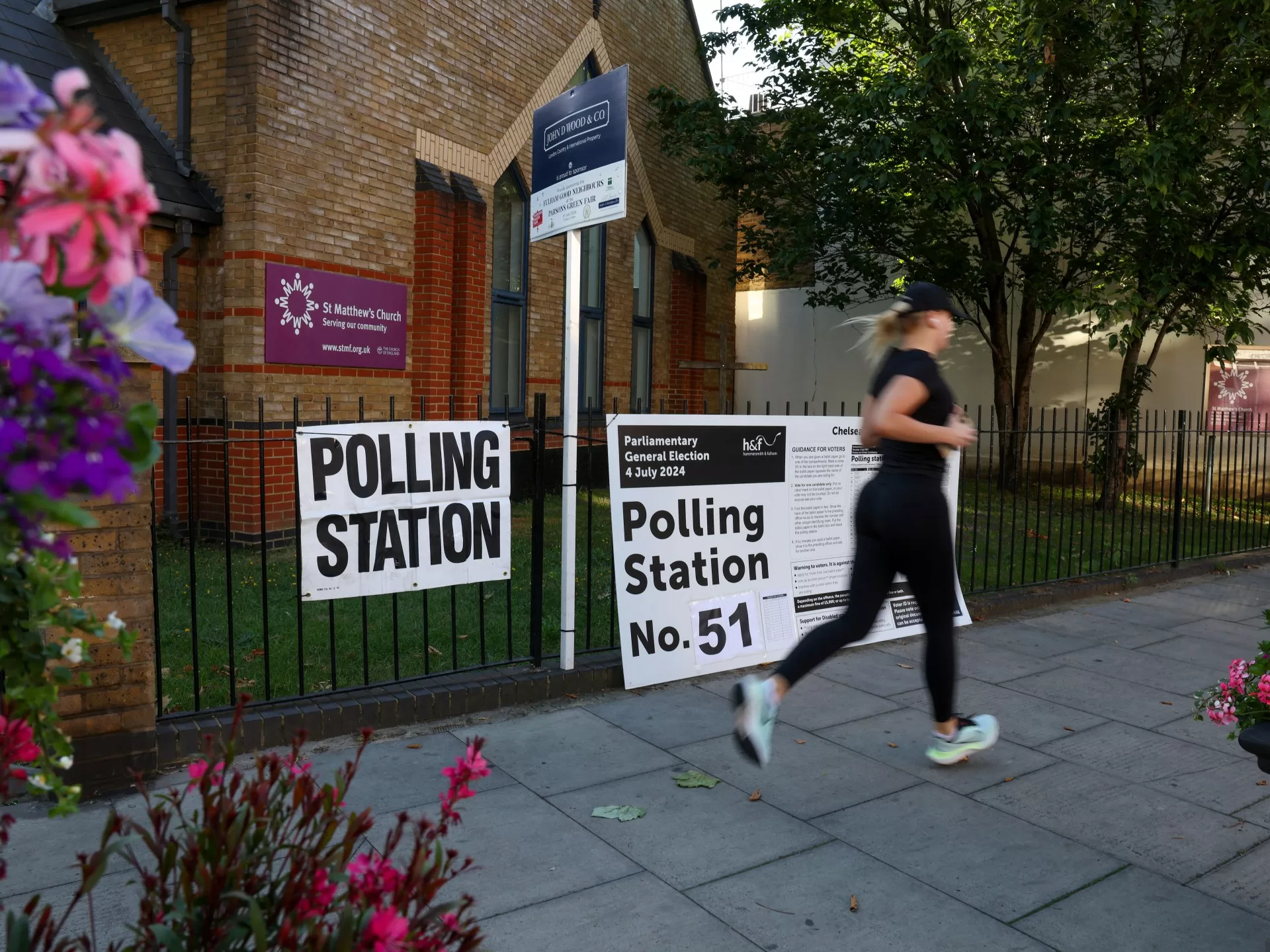Voter turnout was 10 percent lower in areas with the most Muslims as Israel’s war on Gaza remains a key issue.
Just over 50 percent of eligible voters cast their ballots in the United Kingdom’s general election, making it the lowest turnout since universal suffrage began in 1928, according to a new report.
The Institute for Public Policy Research (IPPR) think tank said in its report on Friday that 52 percent of adults voted on July 4, the lowest turnout since the vote was granted to all adults over 21.
It found that voter turnout was 10 percent lower in constituencies with the highest proportion of Muslims.
Israel’s war on Gaza “was an especially salient issue in the 2024 general election that fell along religious lines”, it said.
According to the IPPR, constituencies with a high proportion of Muslims “had a lower turnout rate than areas where the Muslim population is small”. Its analysis revealed that turnout was 51 percent in areas where one-third of the population is Muslim, compared with 61 percent in places where one in 50 people are Muslim.
“These turnout estimates fall to 39 percent and 55 percent respectively if we consider turnout among the voting age population, rather than among registered voters,” the report found.
The Labour Party, led by Keir Starmer, the UK’s new prime minister, won the elections in a landslide, taking the second largest majority in the House of Commons in British history.
But the party’s inability to back an immediate ceasefire in Israel’s war on Gaza saw many Muslim voters looking to independent candidates. Five pro-Palestine candidates, including former Labour leader Jeremy Corbyn, were elected to parliament, winning in Labour strongholds.
Turnout figures were comparable with the 2001 general election, which the IPPR called the only other poll with comparably low turnout since the end of World War I with “57.7 per cent of the voting age population (and 59.4 per cent of registered voters)” casting ballots.
The IPPR said that in constituencies with the highest proportion of people from ethnic minority backgrounds, turnout was 7 percent lower. But in areas where the larger share of the population were older people, homeowners and white, turnout was much higher.
Turnout was 11 percent higher in constituencies with the highest proportion of over 64-year-olds and 13 percent higher in constituencies with the highest proportion of homeowners.
The report said governments “cater” to the needs of the older and wealthier citizens better than “young, poor and minority ethnic communities”.
“This is one way to make sense of policy puzzles in the heart of our democracy. Why have we allowed housing to become so unaffordable? Why have we tolerated income and wealth inequality to rise and remain high? Why have we protected pensions but not social security for working people?” the report said.
The new government has the chance to break from the “democratic doom loop” between political participation and policy responsiveness, it said.
